(18 November 2023 – 15 January 2024) Piazza San Marco, Venice ProcuratieVecchie, 2° piano
Authors:
Daniele Lo Rito,
Lorella Modesti,
Monia Manente,
Silvia Gambalonga.
For the publication of images and captions for editorial articles, please consult the official exhibition Press Kit https://bit.ly/3FRRvRS.
The only photographs that may be published are those authorised for a maximum of 6 per article, no more can be published without authorisation.
Copyright © Francis Giacobetti.
Translated in English by Silvia Gambalonga. Please, we kindly ask the readers not to copy, divulgate or publish any part of the article without consulting one of us. Thank you for your understanding. For any issues about this English translation, please contact Silvia Gambalonga.
Abstract
The exhibition “Vision – Master minds of our time” by Giacobetti is an evocative experience of triple value: portraits and irises flanked by quotes which invite reflection. The experience is completed by the characteristic Venetian views, like brushstrokes on canvas, which peek out from the windows of the Vecchie Procuratie in San Marco square.
On a side, the expressiveness of the black and white portraits of the greatest luminaries of our times is enchanting. On the other, the irises that look like galaxies are captivating for every visitor: from those who have never seen an enlarged iris to those who observe irises all lifelong.
Photographic art meets multidimensional iridology, the interpretative art of irises, with a group of iridologists led by Doctor Lo Rito Daniele, one of the greatest exponents of iridological science. He has been supported by a triad of women who have tried to represent the characters with an in–depth study of their biography. As trees mark their history in the trunk through concentric circles, so people’s life in all its fragility and resources is imprinted in the iris.
Vision becomes an experiential iridological triptych: three famous personalities revealed through the experience of three iridologists who have intertwined iridology and some discoveries by Lo Rito, such as Timerisk, with the biography of the luminaries to represent them.
Giacobetti’s masterpieces have an inestimable artistic and iridological value: an anthological ode that transcends time, making the experiential legacy of the great minds of our time eternal. The irises from Vision are their immortal spiritual testament to humanity that only iridology has the tools to understand, codify and leave as a gift to the world.
Beauty and art, iridology and human biography.
There are many motivations at the origin of this intimate experience of interconnection between art and life, which have led us to an in–depth study through iris and human face in relation to the biographies of famous women and men. They can be summarised as follows:
- In capturing the artistic beauty of irises colors and the expressiveness of the human face portrayed in black-and-
- In perceiving the power of black-and-white in opposition to colors and vice versa. Also, in observing the peculiarities of shapes and colors nuances in the iris.
- In savouring human biography through facial expression and history inscribed on the Then to unite an inner animic perception evoked by both irises and facial expressions, in order to create an imaginal state within us. A state of mind corresponding to more than the sum of the two photographs; rather a third photograph, not visible, but perceptible with animic faculties.
- In observing how human stories are contained in the iris, absorbed by the iris texture and expressed by a pigment or structural
- In hearing an iris narrating and singing about itself, shouting out its human stories, whether harmonious and serene or disharmonious about sorrows and pain.
- In seeing the existential timeline unveiled by Timerisk and written on the “Crown edge” as if it were a cellulose film of a movie, slowly winding up to its existential end. The Crown edge in fact is a specific iridological portion of the iris on which ages of significant life traumas can be defined.
- In constructing the temperamental, constitutional, proxemic, evolutionary profile of each character analysed, grasping the difficult trials to process, metamorphose and endure with self- denial until they are transformed into nourishing virtues for the human
- In getting involved iridologically, being aware that human being is a complex system and must be seen through systemic and multidimensional
To these purposes, we thought that Vision could be illustrated by a ‘tour guide’ who was an expert in iridology, in our case Dr. Daniele Lo Rito, assisted by three people who would illustrate the biography of three famous people photographed by Giacobetti.
These three iridology scholars are: Lorella Modesti, Monia Manente and Silvia Gambalonga; who have chosen Nelson Mandela, Stephen Hawking and Rita Levi-Montalcini respectively.
Before the visit Dr. Daniele Lo Rito made a short conference to explain the concept of Multidimensional Iridology, so that everyone could enjoy the visit even without previous knowledge. Visitors have also been gifted with an iridological brochure about the team’s work
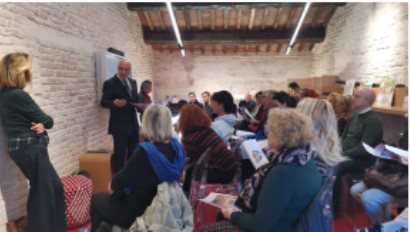
The conference
The visit to Vision exhibition therefore took place with the iridology guide and the biographical guides alternating themselves, making the explanation of each character particularly evocative. The iridology guide described the famous personage by observing his or her constitution, dispositions, diathesis, pupil, size and shape of the crown, symbols drawn on the iris, the dynamics of the proxemic relationship and tproxemic timeline, the iridological birth degree, the power of five, the Celtic Tree of belonging and other aspects. The biographical guides represented the characters, their biographical history, their attitudes, their challenges and struggles, the human events and the inner work that each of them had to face in order to emerge a new man or woman, expanded in the universe and filled with love and the desire to give it to the world.
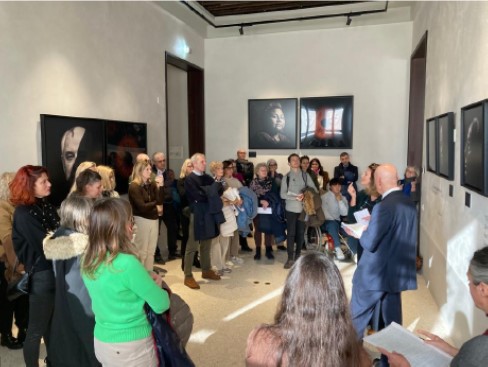
Tour guides Lorella Modesti and Dr. Daniele Lo Rito presenting Nelson Manadela.

Tour guides Monia Manente and Dr. Daniele Lo Rito presenting Stephen Hawking
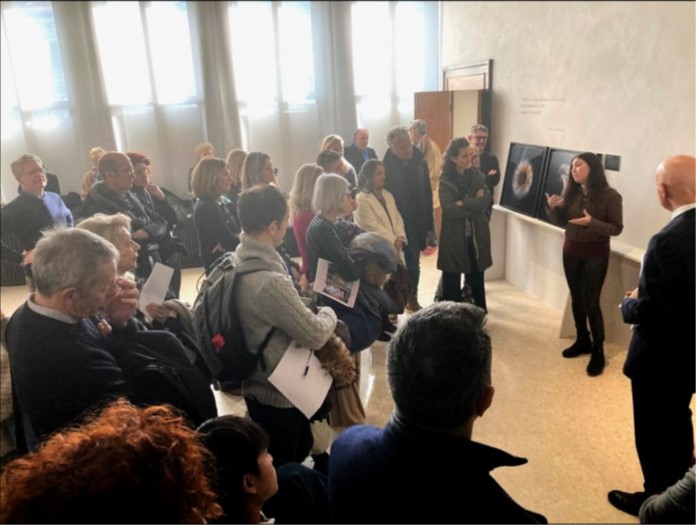
Tour guides Silvia Gambalonga and Dr. Daniele Lo Rito presenting Rita Levi Montalcini.
To complete this exquisite experience, Dr. Daniele Lo Rito wished to add some other layers of artistic expression such as poetry and music. He read some poems he wrote on the characters to homage them. He announced his project to write a collection of poems on the “Master Minds” of Vision in collaboration with Silvia Gambalonga.
At last, to homage Rita Levi-Montalcini he played monocorda, an instrument used in sound therapy, on which he composed musical songs tuned on the frequencies of her iris. It was an indescribable feeling. Sound therapy instruments don’t produce normal music; they are used in medical environment to help with the therapy and their frequencies can be perceived into the body. People in the room could benefit from a sound therapy session directed to the nervous system, so they felt shivers down their spine. It has been the most wonderful conclusion for this tour guide in Vision exhibition.
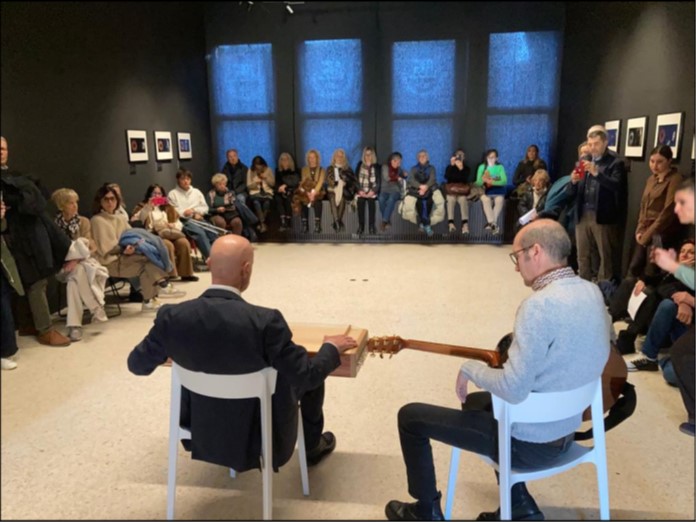
Monocorda and guitar duet
Introduction to Vision – The Exibition
In the heart of the Venetian lagoon, from the windows of the second floor of Vecchie Procuratie in St. Marco’s Square, some of the irises of Vision photography exhibition can be glimpsed from within. They are eyes on the most beautiful “drawing room” in Europe, inviting passers-by to climb into one of the most evocative historical buildings in Venice, for a visit they won’t certainly forget.
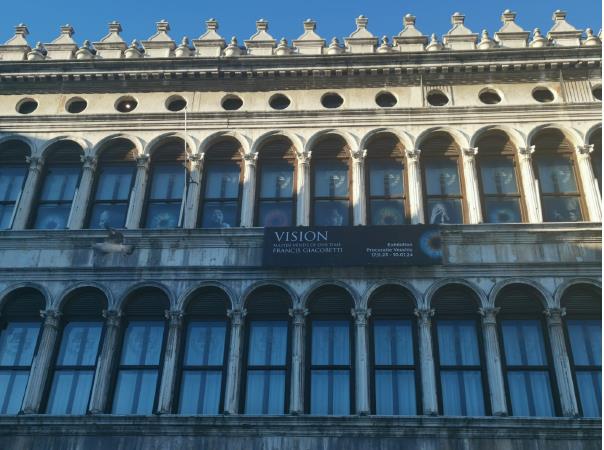
Photography by Silvia Gambalonga
“Vision – The Exhibition: Master minds of our time” is structured in
Fifteen sections. It opens with a room dedicated to photographer Francis Giacobetti, in which you can see his portrait and iris emerging brightly from the dim light of the room. It is a well-deserved celebration of his art and the concept that inspired this art project. A photographic ode to one of the “Master minds” mentioned in the title of his exhibition, which consecrates Giacobetti among the most brilliant personages of our times as an extraordinarily talented photographer. This is nothing new for those who know the artist and his passion for photography in its many forms that have characterised his flourishing career, which has led him to the recognition as one of the most revolutionary photographers of contemporary photography.

Photography by Silvia Gambalonga
The first room is the only one in semi-darkness, the beam of light coming from the windows overlooking St. Marco’s Square seems to invite to continue the visit. This obscurity is curious, it resembles almost like an undertone of humility in the presence of the great figures on which Vision’s exhibition is centred and which in the following rooms are flooded with light. Perhaps a coincidence or a casual choice, but to the attentive visitor it may seem a metaphor of the disavowal of Dante’s haughtiness and Giacobetti’s shrewdness in avoiding the weight of the boulder.
Visiting Vision is an evocative experience of threefold value: faces and irises framed and placed side by side, flanked by quotations that invite reflection. The experience is completed by characteristic Venetian views, like brushstrokes on canvas, which peep through the stained-glass windows.

Copyright © Francis Giacobetti

Copyright © Francis Giacobetti
On one hand, the visitor is amazed by the expressive beauty of the black-and-white portraits, in which well-known faces from the international scene appear in different poses. They are portrayed almost always in close-up or American half-length, while their faces are framed by a play of light and shadow. The black-and-white technique and the balanced contrast skilfully used by Giacobetti seem to make some faces emerge from the darkness. There are no other details on the black background, the only element of the photograph is the person portrayed and whose essence is henceforth immortalized in Vision’s work whereby made eternal. Philanthropists, artists, film-makers, scientists, Nobel Prize winners, men of letters, spiritual fathers and members of the resistance from near and far way countries, portrayed in the simplicity of their expressions and apart from official appearances.
The deep value of Giacobetti’s Vision project is measured in its ability to show us the faces of great women and men, beyond the greatness of their legacy to the world in artistic, political and scientific terms. It isn’t the idea itself that is portrayed; it is the human being. Vision goes further; it goes beyond the veil of notoriety and shows the faces of the greats of our time, remembered for their ideas, their struggles and their discoveries, but still men and women portrayed in their natural state, in the simplicity of gestures which are transposed into singular expressive power. None of them are portrayed alongside the prizes they won and the honours they received.
Giacobetti almost seems to emphasise more the fragility of human soul emerging from the shadows and the immense strength of which it is capable, rather than the greatness of the mind in terms of intelligence and geniality. The “Masters of minds” of our times are women and men whose faces are marked by time, intense lives fully lived and incredible stories of resilience, including survivors of war, segregation and discrimination, significant family issues and personal histories, serious illnesses and decades of imprisonment. These are men and women who have struggled with their own darkness and the darkness of the world only to emerge victorious at last, with the huge merit of having left a great message of universal inspiration. Vision offers the opportunity to celebrate the great minds whose lives have contributed to revolutionising the world. It is an opportunity to seize to catch up with some interesting names that are still little known and to remember those who have already ended their journey on this earth, leaving us with so much nostalgia but also with so much wonder.

SUU KUYI – PORTRAIT ©Francis Giacobetti / SUU KUYI – IRIS ©Francis Giacobetti
On the other hand, the visitor is amazed by the beauty of the colours, textures and patterns in the irises that are juxtaposed with the portraits. Each iris looks like a galaxy, a unique and unrepeatable constellation, a concentration of wonder enclosed in a body part so small, but at the same time so important and fascinating. We look into each other’s eyes constantly, but despite what can be intuited from a single glance, its beauty is transposed in its entirety with enlargement. Not a small intuition that led Giacobetti to realise the Vision photo project, transforming a simple facial detail into a unique masterpiece. With singular astonishment, the visitor can look at more than 100 irises and be enraptured by so much splendour. The strong magnification of the irises captures the visitor’s gaze, immersing him or her in the most incredible dimension of pictorial art that exists: the shapes and colours of the human anatomy.

TELLER IRIS ©Francis Giacobetti / MAILEIRIS ©Francis Giacobetti
“Our eye is made of the same material as the sun. It was shaped by the sun, and that is why we see. The atom in the star speaks to the atom in the eye, using the language of light.”
(Adouze, Cassé, Carrière, Conversations on the Invisible, Paris, P. Belfond, 1988
Iridology bibliography
Lo Rito D. Il cronorischio, Ed. Editorium (1993)
Lo Rito D. L’iridologia, la storianeinostriocchi, Ed Mediterranee (2001)
Lo Rito D. L’iridologiaspirituale, Edito in proprio (2008)
Lo Rito D., Birello L. Iridologiacontemporanea, Edito in proprio (2011)
Lo Rito D. Iridologiamultidimensionale, Edito in proprio (2012)
Lo RitoD. ,Sottili S. La resilienzairidologica, Edito in proprio (2015)
Lo Rito D., Birello L. La potenzadelcinque Vol. 1, Edito in proprio (2017)
Lo Rito D., Birello L. La potenzadelcinque Vol. 2, Edito inproprio (2017)
Lo Rito D., Mach M. Gli alberi della vita: il calendario celtico, Edito in proprio (2018)
Lo Rito D.L’arte nei nostri occhi, Edito in proprio (2018)
Lo Rito D., Modesti L., L’uomotripartito in iridologia, Edito in proprio (2020)
Lo Rito D.L’iridologia e la prossemica Vol. 1, Edito in proprio (2021)
LoRito D., Modesti L., L’uomo tripartito in iridologia, Vol.2 (l’influsso transgenerazionale, Edito in proprio (2021)
Lo Rito D., Birello L. L’iridologia tra l’immanenza e la trascendenza, Edito in proprio (2022)
General Bibliography
- Nelson Mandela. Lungo cammino verso la libertà. Autobiografia, Ed. Feltrinelli 1997
- Stephen Hawking, “Breve storia della mia vita”, Mondadori, 2013
- Rita Levi Montalcini, Elogio dell’imperfezione, Milano, Garzanti, 1987.
- Rita Levi Montalcini, Cantico di una vita, Milano, Cortina, 2000
Sitography
- Sitography. sissco.it
- • Biography Mandela. nelsonmandela.org
- Poetry Invictus di William Ernest Henley.
- Hawking, Documentary/Comedy 2013
- biografieonline.co.uk/biography-stephen-hawking
- abilitychannel.tv/stephen-hawking/
- youtube.com/watch?v=ZrVVvXOIwQc
Rai Documentaries
https://www.treccani.it/enciclopedia/rita-levi-montalcini/
https://www.isof.cnr.it/grandi-scienziati-nella-vita-del-cnr/rita-levi-montalcini/
https://www.unifg.it/it/ateneo/salute-sicurezza-benessere/parita/womeninscience/rita-levi-montalcini
Daniele Lo Rito
+39 347 4621869 – danielelorito@libero.it – www.iridosophia.com
Lorella Modesti
+39 3479591630 – lorellamodesti@yahoo.it
Manente Monia
+39 3289190786 – moniamanente0@gmail.com
Silvia Gambalonga
+39 3472597296 – silviartphotography@outlook.it
Author: Daniele Lo Rito






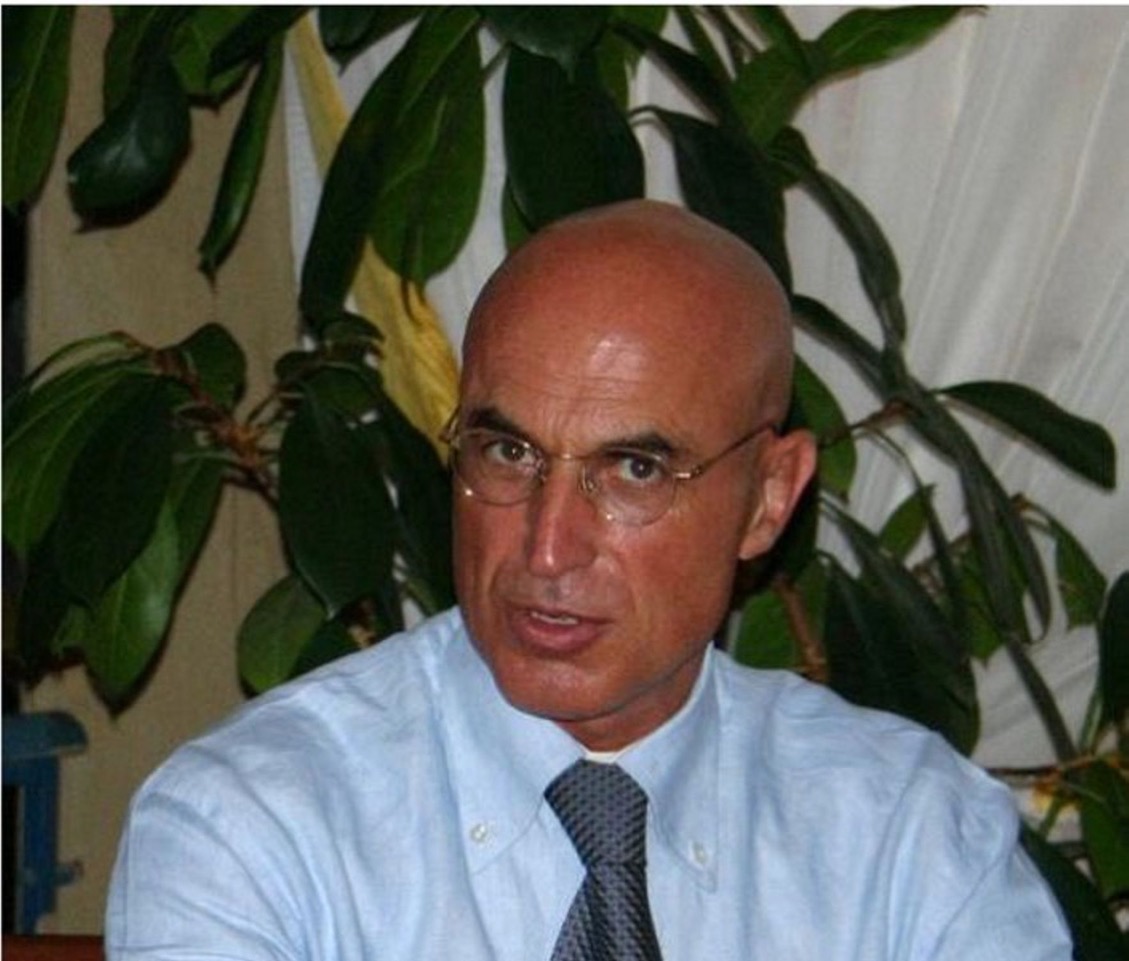
0 commenti